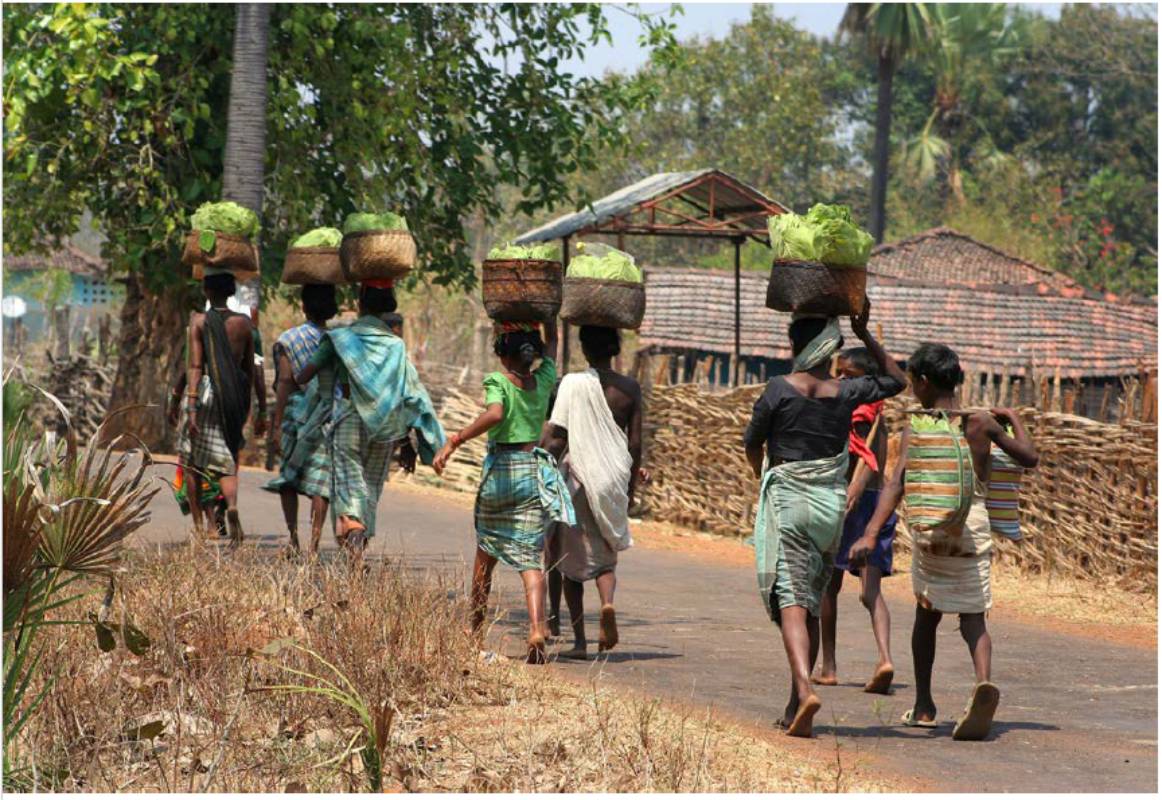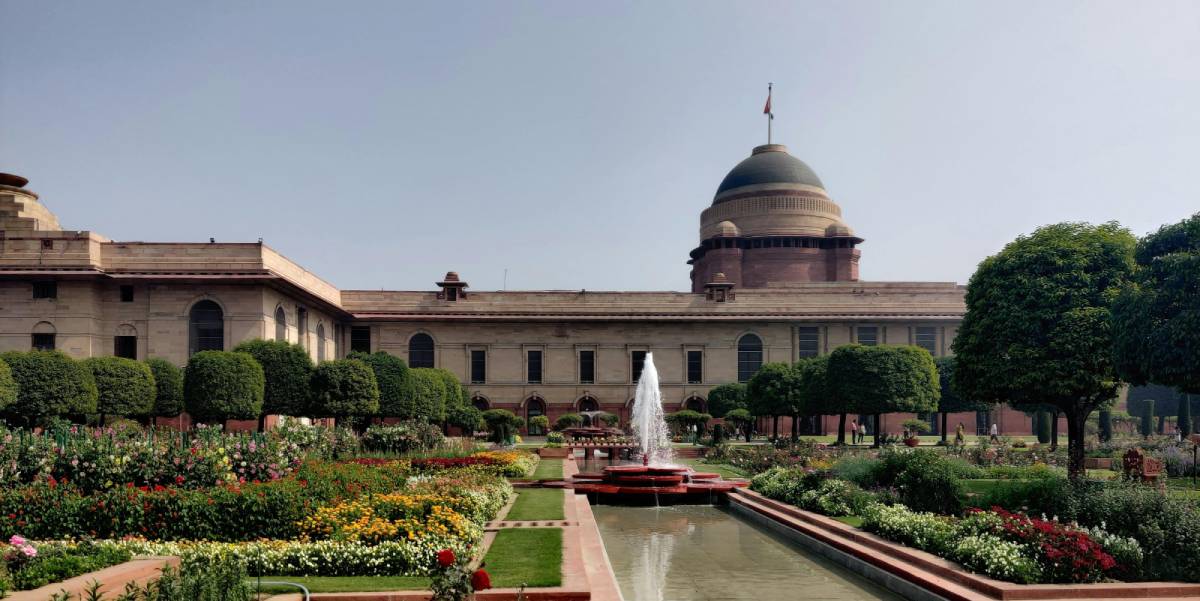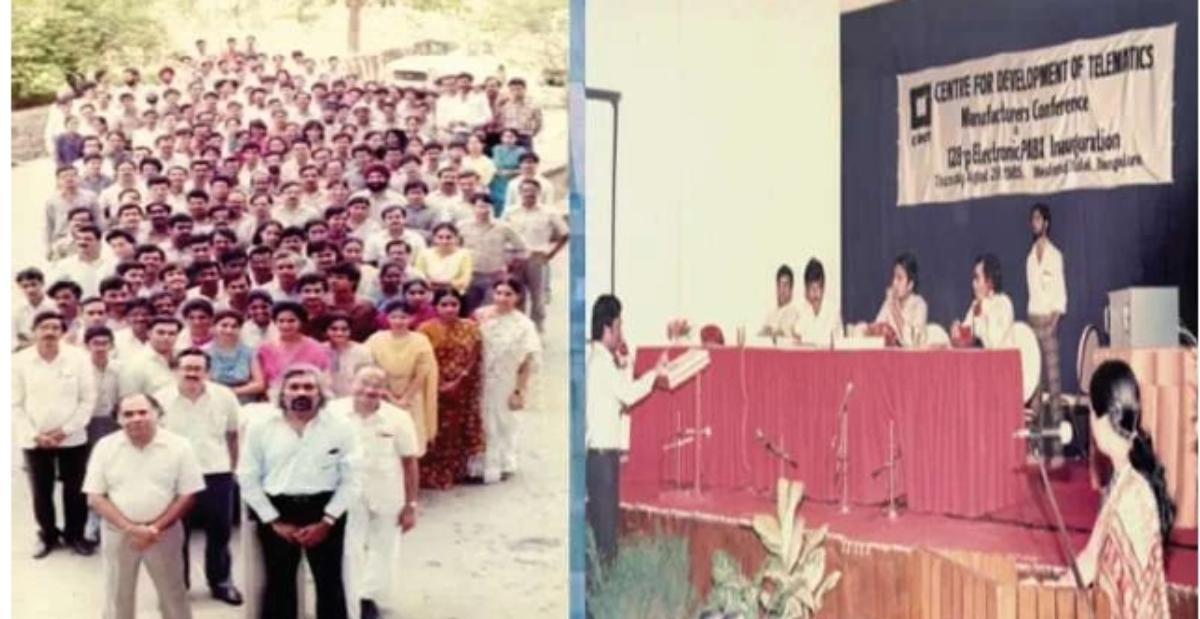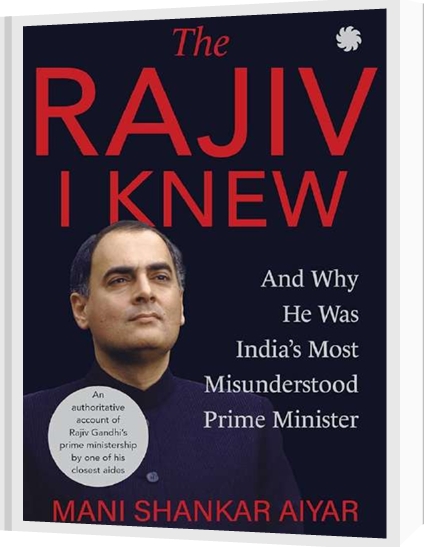The process of development followed in India has resulted in lop-sided spatial development along with a rural-urban divide which has led to large scale migration and rural povertyinduced urbanisation. We thus witness rural areas, without basic infrastructure or amenities, stripped of their capacities to provide decent livelihoods to the people on the one hand and overburdened urban areas with growing slums where the urban poor live in dismal conditions.
Rajiv Gandhi Institute for Contemporary Studies (RGICS) New Delhi is undertaking a research study in order to develop a framework for integrated district development and planning, called the Samarth Zilla framework that uses a regional approach. It borrows substantially from Sustainability Livelihoods Framework (SLF) so far as to include five types of capital (i.e. Natural, Human, Social, Physical, and Financial) and the constraints by which these five types of capital are bound. For an overview, please refer to Policy Watch Vol. VIII Issue 6. The study has been undertaken in at least two each districts in eight states viz. J&K, Punjab, Rajasthan, Uttar Pradesh, Chhattisgrah, Orissa, Assam and Tamil Nadu. Two districts selected for study in Chhatisgarh were Bastar and Bilaspur. A full research report on Samarth Zilla framework is forthcoming.
The framework was planned to be developed in three phases viz. i) the policy observatory phase entailing which is largely field based to capture ground realities ii) the policy repertory phase in which is problem identification, analysis and solution development iii) Policy Laboratory or Policy Lab to test finally selected policy prescriptions in a real-life situation, wherever feasible. In Policy Lab, the expertise of researchers and policymakers is leveraged with the understanding of the local officials, political and civil society leaders including those from the media and academia, as also the community members and policy users to co-design and co-implement solutions which are problem focused and people centred.
Progress in Bastar
Bastar district of Chhattisgarh was chosen for testing the implementation of the concept of policy laboratory. The Policy Lab is to play the role of an independent actor in analysis, action and advocacy. Analysis would be based on observation, consultations with a wide range of stakeholders and research. Action entails the pilot testing of possible solutions and evaluation of results besides capacity building before scaling up. Lastly, the Policy Lab would take up advocacy for scaling up through pentagonal partnerships of (1) communities (2) civil society institutions, including NGOs, academia and the media (3) political leaders (4) business and industry (5) government agencies.
Widespread discussions were held with various stakeholders in the district to get an insight in the dynamics of the development process. Besides individual discussions, a meeting was convened in Jagdalpur on the 24th June, 2019 where the RGICS team from Delhi and the state interacted with a cross section of people. Discussions were held with people from all walks of life such as agriculturists from villages, members of women self help groups in tribal and other areas, local artisans, businessmen and officials of the chamber of commerce, young entrepreneurs, students, agricultural scientists, lawyers, members from academia and the media, officials of non-profit organisations, social and political leaders and government officials, including the District Collector and the Chief Conservator of Forests. Visits were made to the farms of the horticultural university and to the office of the Coconut Development Board as also to individual farms of progressive farmers.
The methodology adopted for the Samarth Zilla study was simple and flexible, starting with assessment of status and potential of each district under each type of capital under SLF. Along with this, three dimensions of constraints over these five types of capital viz. political economy of the district, institutional capability, and financial feasibility, presented a reasonable picture of the nature of development or underdevelopment of the district along with the requirements to reach the assessed potential.
Accordingly, the issues thrown out after the consultations with stakeholders were analysed as per the framework provided as a part of the study and as a preliminary step towards the rolling out of the Policy Lab. Considering space limitations, all types of constraints are bunched in following sections. Finally, some suggestions to make Bastar a more Samarth district are included.
Constraints on Natural Capital
Pattern of control: Forests, which constitute one of the major forms of natural capital in the district, are controlled by the government through the Forest Department. The traditional forest dwellers, mainly the tribal groups, have limited control over the forest resources. Their right to collect minor forest produce gets translated, at best, into a subsistence wage by sale either to the government agencies or to the traders. The benefits through value addition, are thus appropriated not by forest dwellers but other agents.
Selective exploitation: For reasons of revenues to the government and existence of well-entrenched networks of traders, there is large scale exploitation of timber and produce such as tendu patta, sal seeds etc. Other non-timber forest produce (NTFP) such as tamarind, mango, mahua, chiraunji etc. and medicinal and aromatic plants have been overlooked. Currently, institutional capacity required for developing forward and backward linkages and networks with regard to NTFPs is absent. Further, financial resources available are inadequate for large scale processing of NTFPs. At the same time, localised small processing units and groups appear to be feasible.
Underinvestment: With irrigation facilities available to mere 2% gross sown area, a second crop in the rabi season is not feasible. This results in seasonal migration to towns within and outside the state for manual labour. In spite of a heavy average rainfall of over 1600 mm annually, rabi crop is grown only on a miniscule portion of the sown area. Almost no portion of the rainwater is harvested and is allowed to be drained off. The traditional sources of water storage such as lakes and ponds are dysfunctional. Recent initiatives by government to revive traditional sources of water storage and groundwater recharge, may take some time to be visible.
Exclusion: The decisions on mineral exploitation appear to be influenced mainly by the need for revenue generation and the raw material requirements of the national industrial economy or for export earnings. There have been allegations of circumvention of safeguards such as consent of the locals through the gram sabha etc. These lead to occasional protests by the local tribal communities, sometimes on account of religious sentiments. However, impact of these protests on decision making process seems minimal.
Constraints on Human Capital
Disparity in basics: 62% per cent of the population belongs to Scheduled Tribes and largely lacks exposure to the outside world. With only around 53% literacy level as per 2011 census, the district lacks basic wherewithal for empowerment. Among literate, barely 5% had education above the higher secondary level. With one of the lowest HDI rank, the capabilities seem to be highly skewed in favour of urban areas. The tribal and the rural population has become systemically dependent on the government officials, traders and the people of urban areas.
|
Scant state presence: Education in public schools (government and local self-government) needs drastic improvement. No private organisations have or can achieve the scale and reach of the government. In absence of public pressure through voluntary organisations, media etc. for better education, state presence remains scant.
Lifestyle changes: With the dwindling forest resources and abandonment of hunting, a major source of protein and diversified nutrition has been lost. A major ill afflicting the tribal society is alcoholism. There is unabated large scale over abuse of local intoxicants as well as bottled liquor, to the extent that hinders healthy development of human capital in the district.favour of urban areas. The tribal and the rural population has become systemically dependent on the government officials, traders and the people of urban areas.
Lack of relevant skills: Skill levels of the local people, especially tribal people, are dismal. There is a complete lack of entrepreneurial skills for running micro enterprises such as small shops, service centres etc. This is reflected by near absence of small scale NTFP processing units in the area. The tribal youth have the potential to be excellent sportspeople or athletes. This is untapped due to poor facilities for sports and coaching and guidance.
Constraints on Social Capital
Disparities: Within the district, there is a visible difference in the social and human indices – defined or implicit – of development between the tribal population and the non-tribal population. On account of absence of a single homogeneous tribal identity, social capital more pronounced among the non-tribal sections of population largely comprising of government officials and private sector employees, professionals, traders and contractors.
Lack of unity: There are a number of reformist organisations working for tribal communities, including multitude of them for specific tribes. Such multiplicity makes is all the more difficult to forge a single identity of tribal, and induces inter tribe competition and even conflict. Invaluable work of Christian missionaries in providing health and education services to the tribal groups led to conversion of considerable tribal population to Christianity. It has created another division within the tribal society which hampers bringing homogeneity further.
Limited political expression: In absence of a strong political party exclusively representing the tribal population in Chhattisgarh and the varying affiliations of the tribal legislators to different political dispensations, safeguards such as the reservation in electoral constituencies have not prevented dilution of potential political strength of the tribal society.
Left wing extremism (LWE) has disrupted the normal process of development. While LWE is not a serious issue in many parts of the district, its presence continues to loom large over the socio-economic discourse and resolution of the issue is imperative for the healthy growth of human and social capital, as also of physical capital.
|
Constraints on Physical Capital
In Bastar, physical capital itself is limited as compared with the developmental requirements (in terms of the model of development we have been following as a nation and society).
Neglect: The much-needed railway link between Jagdalpur, headquarters of Bastar district, and the state capital Raipur does not yet exist. Jagdalpur is, however, connected by rail to Vishakhapatnam, the port town in Andhra Pradesh. Quite clearly, economic considerations (the need for transportation of iron ore to the port town for exports etc.) have taken precedence over local needs. Chhattisgarh also does not have a state road transport undertaking.
State dominance: Largely, control of physical capital is in the hands of the government departments or the public sector. The Nagarnar steel plant being commissioned is a joint venture of the public sector corporation NMDC. Most business, largely trade and provision of services, is controlled by private enterprises which are mostly small or medium sized. There are no large physical assets by way of factories or industrial plants. There are no big dams or reservoirs or hydro-electric or thermal energy projects.
Shifting control: Community control over common resources such as talaabs etc. was a common feature in rural and tribal communities. However, such institutions have now become dysfunctional and the common resources are also dwindling.
Constraints on Financial Capital
Pattern of control: Financial capital in Bastar is mostly controlled by traders, contractors and businessmen. Access to financial resources for rural population reliant on agriculture and allied activities is limited. This paucity is highlighted by rates of interest in informal lending market being upward of 1 % per month.
Limited alternatives: SHGs as a source of financial capital developed over the last few years. Since, SHGs have structural limitations due to the nature, scope, capacity and reach, they are inadequate to meet overall demand. Institutional finance has limitations in terms of complexity of procedures and processing delays, limitations related to purposes and eligibility etc. Even though total demand for finance in Bastar is not very high, due to the constraints detailed above, a small entrepreneur, including a farmer, find it difficult to access timely and adequate finance.
Cultural hindrance: The tribal societies were not in need of much cash traditionally for their pattern of living. However, with the development of contact with the modern market economy (in the limited sense), these societies are also experiencing the need for finance. Temperamentally, the tribal communities do not plan or save for the future. Accumulation of capital or savings is a concept foreign to their traditional way of living. The lack of exposure; information asymmetry about the value and uses of their produce; and aversion to calculative transactions, have resulted in the tribal community losing control over markets and finance.
Inter-linkages Between Various Types of Capital
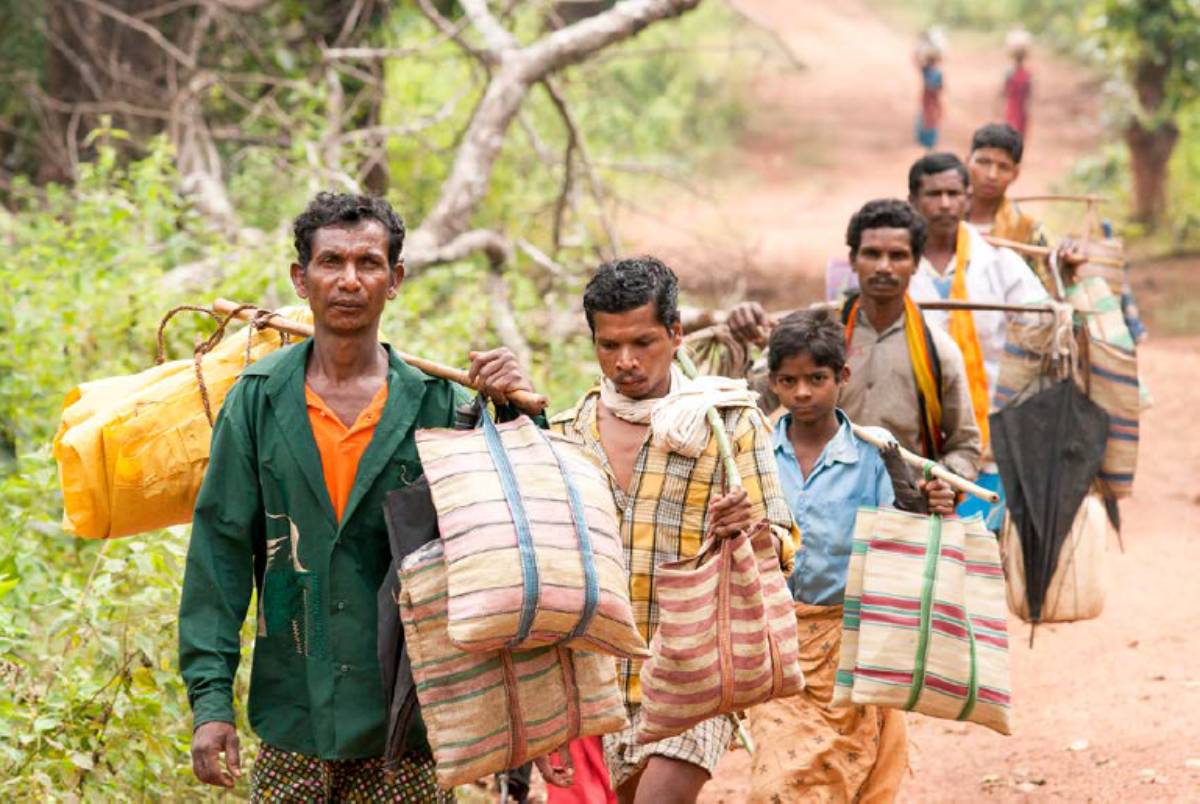
Paradoxically, the wealth of natural resources has directly or indirectly led to inadequate growth of its physical capital but more importantly has also contributed to the seclusion of a large part of the population from the rest of the country depriving it of participation in the process of development. The remoteness and seclusion, along with other factors, has hindered the growth of human capital and also impacted the development of social capital and led to strife threatening peace and security. This, in turn, has affected the growth of financial and physical capital. One of the possible solutions could be developing social capital through strengthening of human capital by training and motivation.
How to Make Bastar District Samarth – A Strategy
It would be useful, while trying to draw up a strategy for making Bastar a more “samarth” district, to first identify the various paths which should not be adopted for the development of Bastar. Some of the paths on which the development of Bastar should not be based are indicated below:
- Excessive and unplanned extraction of minerals and establishment of large industrial units based on mining and its products (a corollary to this would be unplanned and one-dimensional urbanisation)
- Destruction of forests or depletion of water resources on a major scale or any undue adverse impact on any form of natural capital
- Large scale migration of the local youth (except migration for limited period and a specific purpose)
- Neglect of the traditional values of the tribal society rooted in respect for nature, coexistence with flora and fauna of the region, sustainable lifestyle without consumerist culture, trust and transparency in dealings, community bonds, freedom of action for women etc.
The point is to follow a path which does not lead to mindless destruction of natural capital and to an undesirable influence of our consumerist urban culture on the values which are integral to the ethos of the tribal society in particular and, traditionally, to the rural society in general. It is, therefore, suggested that the path to “Samarth-ness” be based on sustainable exploitation and eventual preservation and nurturing of all types of capital, especially with human and social capital acting as the main players managing the nurturance of all types of capital. People would have to come together to form institutions and make them samarth to take up sustainable development. The key then would be to develop human capital and energise it by developing leadership to strengthen social capital with consequent nurturing of natural, physical and financial capital. This action would lead to a virtuous cycle of nurturance with the strengthening of each form of capital.
Natural Capital
Forests with biodiversity and water (including rainfall) are two resources which the district enjoys in relative abundance. However, both these resources need to be nurtured
- There is scope for increasing the area, the density and diversity of forests. The Forest Department could get more forest produce yielding trees planted, though the effect could be visible only in the medium to long term.
- NTFP processing must be taken up in a more organised manner. Small community groups and SHGs could be encouraged to take up processing and trade of minor forest produce.
- Promote horticulture. Cashew plantation, which was taken up by government efforts about three decades ago has been quite successful. The Shaheed Gundadhur Horticulture College scientists are working on projects for cultivating kinnow, coffee etc. The Coconut Development Board has successfully introduced coconut plantations in and around Bastar district.
- Cultivation of medicinal and aromatic plants could be encouraged by exploiting the currently available species and using the locally available traditional knowledge.
- Harvesting of water and recharge of groundwater. Tanks or talaabs on community lands, which were traditionally used need to be rejuvenated.
- Organic farming, diversification of crops etc. to increase the quality of soil and better remuneration. Crops such as millets, pulses which would also improve the nutritious content of the food could help improve human capital.
- Fisheries and animal husbandry, especially rearing pigs, goats, poultry and milch animals in some areas could help in deriving better income.
Human Capital
A samarth district is made of samarth people. While people of Bastar have some unique capabilities, these need to be aligned with the current social needs and certain latent capabilities would have to be strengthened. The need is to ensure that the people get the benefit of public education provided by the government and that a large part of the population is trained in various skills to utilise various livelihoods opportunities. Micro entrepreneurship as well as institutional entrepreneurship needs to be developed.
A plan for samarth human capital in the context of Bastar would mean:
- There is an urgent need to raise the level of education with improvement in the quality of education in public schools through
- Monitoring of functioning of schools and work of teachers etc.
- Equipping teachers with the right skills and knowledge through training
- Use of web based and computer-based teaching aids
- Ensuring proper infrastructure, delivery of other facilities including mid-day meals etc.
- Empowering community and making them aware of the need to demand provision of proper education
2.Developing appropriate skills for livelihoods of local people.
- Training in skills for processing NTFP and also rudiments of trading, either collectively or individually, without getting exploited.
- Skills related to agricultural activities such animal husbandry, use of implements for agriculture, making of organic manure and pesticides, vermiculture etc. can be taught.
- Non-farm-based skills such as driving, masonry, running of small businesses, tailoring, etc. to reduce excessive reliance primary activities for livelihoods.
- Training in hospitality related skills, especially related to nature based responsible tourism, including running of home-stays.
- For the educated youth, basic skills in computerised accounting, maintenance of computerised records, working in retail sector etc. and financial sector could be useful.
- Micro-Entrepreneurship training needs to be imparted for small businesses such as retail shops, dairy units, small restaurants or tea stalls, transport related activities etc. Handholding and guidance is extremely important.
- The most relevant training may be to run community organisations such as SHGs, producer groups, co-operative societies, associations etc. More than training, this would require patient hand-holding.
- The potential of tribal youth in sports and athletics must be tapped by encouraging sports and providing training and necessary facilities. Specialised academies on the model of Bhaichung Bhutia Football schools or the Bridges of Hope Sports model could be set up.
- Provision of nutritious local food would go a long way in improving the health of the population and the cognitive abilities of children. 7. A specially devised programme for leadership development should be launched extensively. The emphasis should be on practical and “on-the-job” training as well.
|
Social Capital
The key to equitable development would be nurturing of human capital followed by strengthening of social capital. It requires nurturing the culture of functioning through institutions.
One of the initial measures for developing social capital could be by providing training and hand-holding for formation of community groups for various purposes, linked to each type of capital.
- Groups of forest dwellers engaged in collecting minor forest produce could be trained to undertake collective trading followed by primary processing of produce, beginning with operations on a small scale.
- Agriculturists could be organised in small producer groups initially for collective purchase of inputs and sale of produce, eventually leading to FPOs and federations.
- Groups of villagers could be trained to provide home stay or other forms of tourist services providing an experience of rural or tribal life.
- SHGs and their federations could be strengthened. Credit co-operative societies could be formed to meet the needs of agriculturists and small businesses. SHGs have also proved to be good instruments of ushering social change.
- Sports teams and clubs etc. could be encouraged to develop sports through community organisations.
- Groups of citizens, both in urban and rural areas, could be formed to improve governance and participation in local self-government.
- The influence of cultural groups or even religious and identity-based groups could be used to bring desirable social change such as control of addiction, extravagant expenditure on rituals, preservation of nature, etc.
The aim in promoting all these groups should not just be the achievement of professed purposes or functions of the groups but also ushering in the culture of socially active organisations and collective functioning.
Physical Capital
Connectivity to Raipur from Jagdalpur by rail could give a boost to tourism as well as trade. Road network could also be improved. There is a need to improve the transportation facilities and the possibility of having a government promoted or a PPP model-based road transport corporation.
There is good scope for development of water bodies and other common resources with community control. Talaabs could be repaired and new water storage structures as well as small check dams etc. could be constructed.
A network of small warehouses and cold-storage units could be formed, for storage of forest and agricultural produce which could be helpful in mitigation of risk due to price fluctuations.
Financial Capital
Government funds, including the District Mineral Fund (DMF) resources, would be adequate for the developmental needs of the district, if their utilisation is targeted efficiently.
The needs of business enterprises are relatively on a moderate scale due to the low level of operations and would not pose a challenge if viewed at the macro level. Small Finance Banks and micro-finance institutions, which are well suited for meeting the needs of the district should be encouraged to widen their network.
The SHGs and their federations need to be strengthened further as they are good source of finance in times of needs to the members. Co-operative societies also could be encouraged.
The state government or institutions such as NABARD should institute a special fund such as a “Tribal Area Micro-Venture Fund” for providing the initial needs of financial capital of community organisations such as producer groups etc. engaged in production, trading and processing of agricultural and forest produce. Once the groups become viable and capable of raising finance from banks etc., these could be weaned away.
The capital needed for irrigation and water harvesting investments could be from an Irrigation Development Fund created by the state government. NABARD could also provide refinance from the Rural Infrastructure Development Fund (RIDF).
Eventually, the overall needs of all organisations could be effectively met through community resources, supplemented by banks and financial institutions.
Challenges in the Way to Altering the Existing Patterns of Control
The ways of strengthening the various forms of capital in Bastar present some challenges and conflicting outcomes.
Challenges in the Development of Social Capital
The history of development of social capital through building of organisations and institutions shows that such attempts have not met with much success. Of course, the reasons for these could be manifold. One of the reasons could be that most such attempts were by official agencies.
There do not appear to be many people-led spontaneous initiatives which is a sociocultural feature needing attention. Encouraging such initiatives would need efforts for development of local and regional leadership, beginning on a small scale initially.
Conflicting Outcome Between Physical and Natural Capital
Firstly, the development of physical capital – which is one of the prerequisites for overall development in the current model of our economy- would entail destruction of part of the natural capital. Striking the right balance between the two would be a highly complex task needing the reconciliation of conflicting priorities and ideologies.
The conflict is perhaps most complex in the matter of extraction of mineral resources and development of industries based on minerals.
Conflicting Outcome Between Social Capital and Other Forms
Preservation of the tribal way of life while aiming for growth is desired. However, strengthening of social and financial capital would involve establishing better connectivity not just in physical terms but also by way of greater contact with the outside world. A part of the suggested strategy for growth of social and financial capital is the linking with markets for the forest produce, agricultural products as also for services of tourism etc. For all the good, the risk of contact with markets corrupting the tribal way of life is quite high. With high levels of deprivation in terms of material comforts for ages, any connect with the outside world could easily lure them to the consumerist and profiteering practices. The conflict is not just a matter of tactics or implementation. It is a matter which needs to be addressed at the conceptual level while formulating any strategy for altering the status quo.
Suggested Strategy for Overcoming the Challenges
Clarity of purpose and goals is a pre-requisite for overcoming the challenges. Discussions with local population to understand their needs and priorities would be a must. Once clarity of the goals and the path is achieved at least to some extent, sustained discussions with cross-sections of the community would be required for implementation. Patient hand holding for nurturing the culture of community action would be needed to ensure a more equitable pattern of control with sustainable use of resources.

